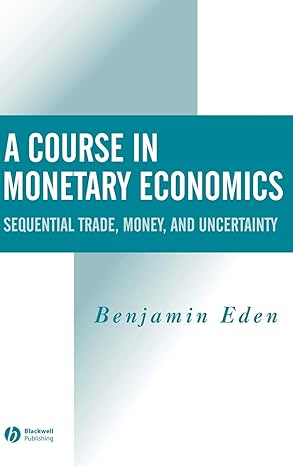11 Assume two assets: Real balances and physical capital. As in chapter 2, consumption is defined by:
Question:
11 Assume two assets: Real balances and physical capital. As in chapter 2, consumption is defined by: Ct = Yt + f (mtb), where Yt is corn consumption and mtb is the beginning of period real balances. But unlike the specification in chapter 2, the agent’s budget constraint (asset evolution equation) is:
kt + mt = ¯Y − Yt + mt−1(1 + rm) + R(kt−1)θ(mtb) + gt, where R( ) is a monotonic function with the standard properties and the function θ( ) has the same properties as the function f( ): it is strictly concave and increasing initially. Thus we assume that in addition to yielding services to the shopper, real balances also make capital more productive.
We assume gt = −mrm for all t.
(a) What is the consumption of corn along a smooth consumption path characterized by m?
(b) Consider the following deviation from the smooth consumption path. The consumer plans to reduce current corn consumption by x units, increase his real balances by that amount (Δmt = −ΔYt = −ΔCt = x) and spend it in the next period. What will be the change (ΔCt+1) in t + 1 consumption relative to the smooth consumption path?
(c) Answer
(b) under the assumption that instead of accumulating real balances, the agent increases the stock of capital at time t by x units.
(d) What is the slope of the budget constraint in the (Ct, Ct+1) plane. Give two expressions:
One when you accumulate real balances as in
(b) and one when you increase the stock of capital as in (c). Assume now that x is small.
(e) What are the two first order conditions?
(f ) What happens to the steady-state level of capitalwhen the steady state rate of inflation goes up? Assume that the steady-state real balances go down when inflation goes up.
(g) Derive the first order conditions using the Lagrangian method.
Step by Step Answer:

A Course In Monetary Economics Sequential Trade Money And Uncertainty
ISBN: 978-0631215653
1st Edition
Authors: Benjamin Eden






